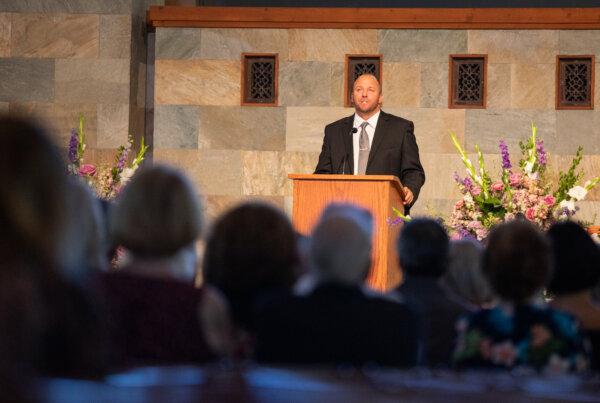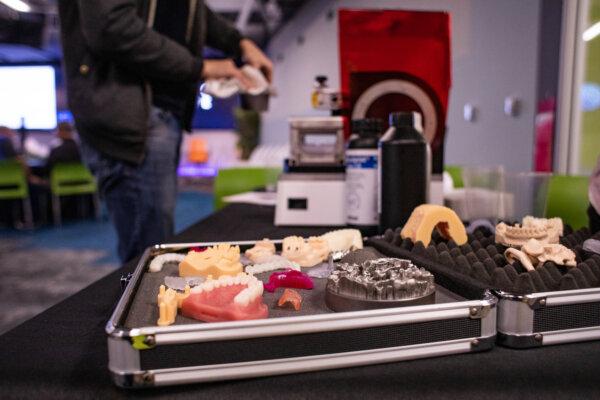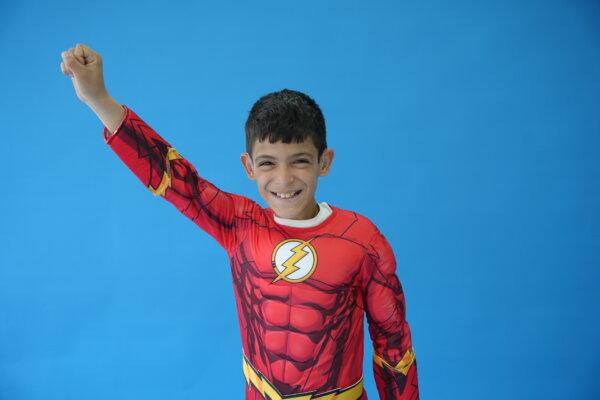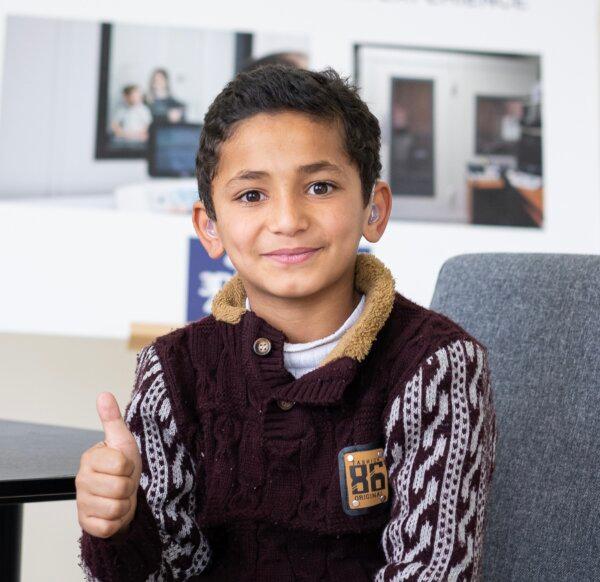As Shem, 7, sat with an audiologist in Amman, Jordan, her father closely analyzed a pipe-like medical instrument going into her ear canal to test and activate her new hearing aid.
Once the power button was pressed and sound waves were activated, Shem’s eyes expanded with happiness as she was finally able to hear for the first time.
“She was just oozing with excitement once the audiologist activated that power button,” Jason Szolomayer, founder of 3DP4ME—which stands for “3D printing for me”—a U.S.-based nonprofit that specializes in providing children with 3D printed hearing-aid technology, told The Epoch Times. “As tears began to fall from her father’s eyes, the trajectory of Shem’s life was about to change forever.”
For Mr. Szolomayer and his organization, providing children with a chance to hear is a “special experience.”
The company connects hard-of-hearing children with hearing aid technology in Jordan, where they are “desperately unreached,” according to the World Health Organization.
Mr. Szolomayer said that with many Syrian and Palestinian refugees sheltering in Jordan, the wait for hearing aids is in the thousands.
Globally, hearing aid technology is hard to get for those who need it. While 72 million people worldwide are in need of hearing aids, only 10 percent have them, according to recent WHO data.
In the Middle East and North Africa, a severe lack of audiologists has increased the need, according to Mr. Szolomayer. He said there are additional cultural limitations for those with such disabilities.
“You have to understand that in shame/honor cultures like those in the Middle East, those with hearing challenges are often not only disconnected from their families, but also the ability to operate in work environments,” he said. “Connecting them with hearing gives them the ability to participate in society.”

3DP4ME founder Jason Szolomayer speaks in Newport Beach, Calif., on Aug. 25, 2022. (John Fredricks/The Epoch Times)

A child wears a new hearing aid. (Courtesy of 3DP4ME)
Trading the Comforts of SoCal for the Middle East
Even from his teen days working on golf courses in Newport Beach, California, Mr. Szolomayer recalled a cycle of questioning whether he had a deeper purpose in life, which continued during his later work in banking after graduating from California State University Fullerton in 2002.His search would eventually lead to his taking time off from banking to work in the international humanitarian space, including helping Japanese citizens after the horrific tsunami disaster of 2011.
Shortly after, he arrived in Jordan, and never left.
“I was just looking at opportunities to serve,” Mr. Szolomayer said. “But when I came to Jordan, I just fell in love with this place.”
He said he believes that his visit to Jordan was not random.
He said a mentor of his, a Dutchman named Andrew, who had been in the country since 1977 and who had worked for decades assisting deaf children, told him of the constraints they faced. Mr. Szolomayer said he began brainstorming ideas to try and meet their hearing needs.
“Andrew’s team is amazing, and I cannot say enough how much I love these guys and the kids they serve,” Mr. Szolomayer said. “But they were kind of limited on their capacity. Andrew knew more was needed in the operation to help these kids hear again.”
Soon after, Mr. Szolomayer said he realized that his friend’s team had only a traditional process for creating hearing aids, which required heating plaster moldings to the children’s ears and then sun-drying them.
The process was very slow, he said, meaning fewer aids for the thousands of Jordanians seeking to hear.
Mr. Szolomayer said that ultimately he discovered in 2014 that 3D printing was taking the hearing aid market “by storm” and manufacturing the devices already in the millions.

3D printing examples on display in Irvine, Calif. on Nov. 7, 2017. (John Fredricks/The Epoch Times)
He said he eventually was able to get the technology to Jordan through networking and fundraising efforts and built a team to move forward.
Aside from 3D printers, Mr. Szolomayer’s volunteer team of audiologists, medical professionals, and tech experts now also use a mobile 3D scanner to customize ear moldings for children.
“It’s basically like a water balloon that we stick in the patient’s ear,” he said. “Ears are a unique identifier just like our fingertips, so everybody’s ear is a unique shape.”
The mobile scanner takes only two minutes to gather the information needed for accurate moldings, he said.
Once the device is fitted on the child, speech therapy is also conducted as the patient learns to communicate with his or her newly corrected level of hearing.
All of this work, Mr. Szolomayer said, was made possible through a connection with the King Hussein Foundation, a Jordanian nonprofit socio-economic health care program that provides services in 28 locations throughout the nation, but not regarding hearing loss.
“There’s a number of pockets in Jordan that have no services at all,” Mr. Szolomayer said. “And that’s where we are going with this.”

A child wears new hearing aids. (Courtesy of 3DP4ME)
Empowered for Change
After two months with his new hearing aids, another child—elementary school-aged Amir—said he was finally able to stand up to other students that were bullying him at school for his disability.“This is how I hear,” he said he finally told them, feeling empowered to stand up for himself. “If you have a problem with my hearing aids, you can just deal with it.”
According to Mr. Szolomayer, the boy’s parents were proud of their son’s new confidence that he never had before being able to fully hear.
“One of the biggest challenges is breaking cultural stigmas with the hard-of-hearing population,” Mr. Szolomayer said.
He also said that those who cannot hear have fewer employment opportunities in a nation where close to 30 percent are unemployed.
Recently, 3DP4ME has experienced its own hardships.
In October, Mr. Szolomayer said he and his small team were near to closing because of fundraising constraints.
In the process of shutting down, he said, a donor, who has asked to remain anonymous, came through, allowing the work to continue.
“Our donor ... really believes in what we are doing here,” Mr. Szolomayer said. “Their commitment gives us the opportunity to continue forward and continue finding partners to help these kids hear.”
For more information or to donate to 3DP4ME, visit 3dp4me.org/hearing-express-project/

A child wears new hearing aids. (Courtesy of 3DP4ME)











